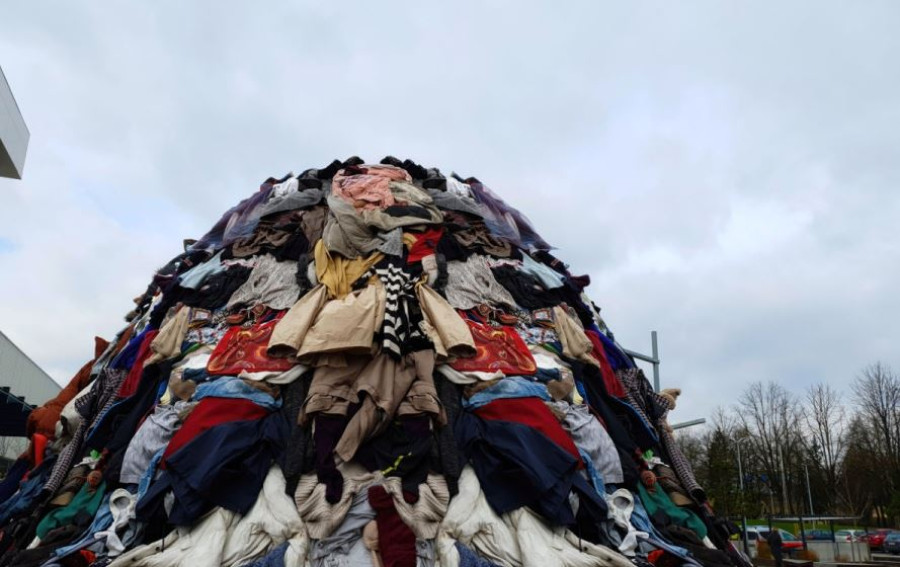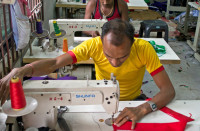Columns
The cost of our clothes
Shopping habits are quietly creating an environmental crisis that’s becoming impossible to ignore.
Shreya Singhal
Every year, India sees the launch of over 1,000 new retail brands, adding to millions of brands globally. Each brand, on average, creates approximately 1,000 new styles annually, with about 30 percent of old stock often ending up as waste. Last year, Shein alone created 1.3 million styles. Does this mean we should stop creating new brands? Should consumers feel guilty for not knowing what happens to discarded products? The solution lies in mindful consumption buying less, making thoughtful choices, and consuming responsibly. Many companies falsely claim to be eco-friendly, a practice known as green-washing.
They use green and brown packaging, nature symbols like leaves and trees, and vague phrases like “80 percent recyclable” to mislead customers. Without proper certifications and clear labels, it’s hard to know which products are truly sustainable. The food industry requires clear ingredient labels, thanks to FSSAI rules. Similar transparency is needed for products that harm the environment. Clear guidelines would help consumers make better choices. Most of us do not think about the carbon footprint of our shopping habits because not everyone knows what it means and companies are not mandated to share that information with consumers. A carbon footprint refers to the total amount of harmful gases, like carbon dioxide, released into the air from actions like production or delivery. Easy returns and “no questions-asked” policies encourage wasteful buying.
Every return adds to carbon emissions, making climate change worse. According to an Optoro report, up to 24 million metric tons of CO2 emissions are attributed to e-commerce returns each year. To offset this carbon, at least 500 million trees would be needed. Plastic pollution isn’t just about bags and bottles. Microplastics, that is tiny plastic particles, are found in oceans, soil, air and even in our bodies. Surprisingly, the largest source of these microplastics isn’t single-use plastics but synthetic clothing. Washing these clothes contributes about 35 percent of global microplastic pollution. Everyday items like cosmetics, glitter and tires also add to the problem. Your favorite T-shirt probably took 2,700 liters of water to make—that’s enough drinking water for one person for approximately 912 days. From the mountains of clothes in our closets, to the mountains of waste in our landfills, our shopping habits are quietly creating an environmental crisis that’s becoming impossible to ignore. This affects not just the planet but also our health. Microplastics harm our bodies, and rising temperatures threaten wildlife and ecosystems. If we don’t change, today’s habits will create tomorrow’s crises. The answer isn’t banning one product but rethinking how we produce and consume. Every bottled product on a supermarket shelf has synthetic materials, either in the packaging or ingredients.
Businesses must handle waste better and take responsibility for the afterlife of their products. Consumers need to make informed choices and governments should enforce stricter rules. Marketers use clever tactics to make us buy more. Brands create urgency with phrases like “Buy Now” and “Limited Time Offer” or misleading discounts like “50 percent off up to Rs 80,” which just means Rs 80 off. Canadian artist and writer Sarah Lazarovic offers an alternative with her Buyerarchy of Needs, inspired by American psychologist Maslow’s hierarchy of needs. She encourages a shift in perspective with this five-step framework: first, use what you already have; next, borrow or swap with others; then, consider thrifting or buying second-hand; if possible, make it yourself; and finally, buy only if absolutely necessary. This approach helps us avoid impulsive buying and use resources more wisely. Another way is to follow a 21 day rule, add an item in your cart and forget about it, if you still need it after 21 days then go ahead and buy it.
Living sustainably isn’t about sacrifice, it’s about smarter choices. Businesses must step up, governments need to strengthen regulations and consumers must rethink their habits. By buying less and choosing wisely, we can protect the planet and build a better future.
—The Statesman (India)/ANN




 18.12°C Kathmandu
18.12°C Kathmandu















